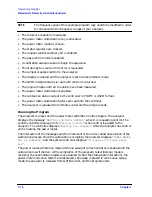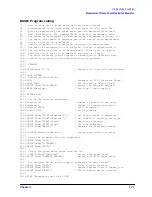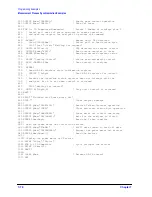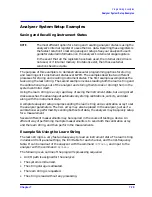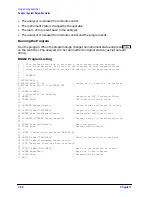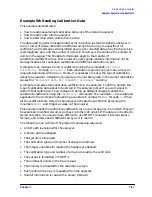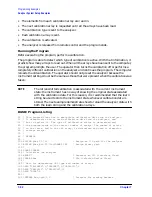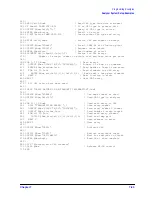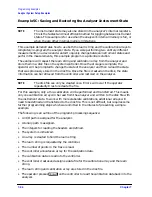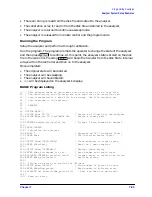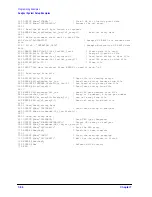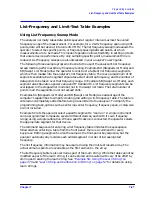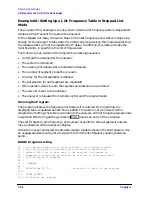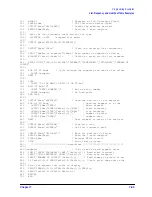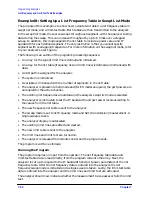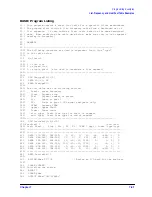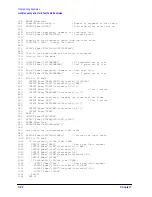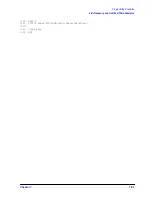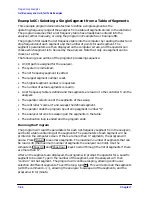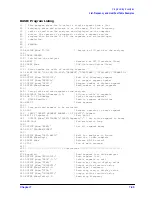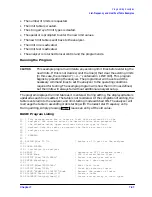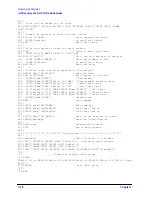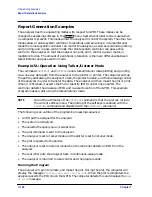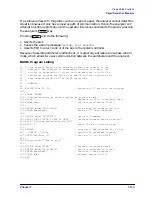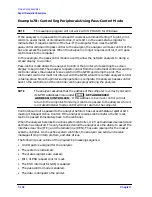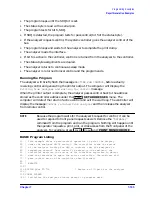
7-90
Chapter 7
Programming Examples
List-Frequency and Limit-Test Table Examples
Example 6B: Setting Up a List Frequency Table in Swept List Mode
The purpose of this example is to show how to create two tables: a list frequency table in
swept list mode, and a limit-test table. Both tables are then transmitted to the analyzer.
In the swept list mode, the source sweeps through each segment, with the analyzer taking
data during the sweep. This can increase throughput by up to 6 times over a stepped
sweep. In addition, this mode expands the list table to include a power value and IF
bandwidth for each defined segment. The only restriction is that you cannot specify
segments with overlapping frequencies. For more information on the swept list mode, refer
to your analyzer’s user’s guide.
The following is an outline of the program's processing sequence:
• An array for the type of limit line is defined and initialized.
• An array for the list table (frequency list and limit lines) is defined and initialized with
data.
• An I/O path is assigned for the analyzer.
• The system is initialized.
• A variable is initialized with the number of segments in the list table.
• The analyzer is placed into hold mode and (for ES model analyzers) the port powers are
uncoupled for the active channel.
• The existing list frequencies are edited and the analyzer swept list mode is selected.
• The analyzer is instructed to set the IF bandwidth and port power levels according to
the values from the list table.
• The new frequency list table is sent to the analyzer.
• The sweep mode is set to list frequency mode and S21 (transmission) measurement. A
single sweep is taken.
• The analyzer display is autoscaled.
• The existing limit lines are edited and cleared.
• The new limit table is sent to the analyzer.
• The limit lines and limit test are turned on.
• The analyzer is released from remote control and the program ends.
The program is written as follows:
Running the Program
The program requires no input from the operator. The list frequency table data and
limit-test table data is read directly from the program code into the array. Next, the
analyzer is set up to respond to the IF bandwidth and port power parameters of the list
frequency table. After the list frequency data is entered into the analyzer, the list
frequency sweep mode is initiated and a single sweep is taken. Lastly, the limit-test table
data is entered into the analyzer and the limit lines and limit test are activated.
The analyzer should now indicate whether the measurement trace passes or fails the limit
test.
Summary of Contents for 8719ES
Page 15: ...1 1 1 Alphabetical Command Reference ...
Page 293: ...2 1 2 Introduction to Instrument Control ...
Page 310: ...3 1 3 GPIB Programming ...
Page 334: ...4 1 4 Reading Analyzer Data ...
Page 343: ...5 1 5 Data Processing Chain ...
Page 350: ...6 1 6 Error Reporting ...
Page 364: ...7 1 7 Programming Examples ...
Page 502: ...A 1 A Preset Conditions ...
Page 517: ...B 1 B Command Listings ...

